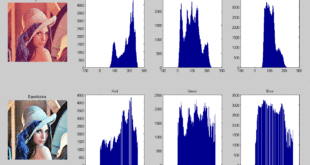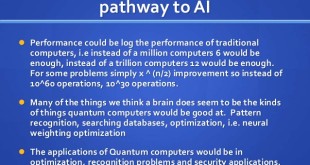DARPA pursues game-changing technologies and capabilities in a way that provides a surprising advantage for U.S. and Allied warfighters and at a much faster pace than the state of the art. DARPA’s work with the Services and other agencies aims to meet not just known but as-yet unrecognized needs and move swiftly to deployment. That includes an increased emphasis on prototyping and joint projects – and, especially, a tighter emphasis on designing, building, and testing aspects of technology. DARPA also seeks to promote continued American innovation throughout the broader S&T ecosystem of university and industry partners.
Joint University Microelectronics Program (JUMP) was DARPA’s formal program that commenced in January 2018 and continued for five years. Under JUMP, the challenges of the “application-centric” research centers focused on accomplishing application-oriented goals and spurring the development of complex systems with capabilities well beyond those available today. Diving deep into cognitive computing, intelligent memory and storage, distributed computing and networking, and radio frequency (RF) to terahertz (THz) sensor and communications systems, among other areas, these research centers are developing systems that will be transferable to military and industry in a five year timeframe and ready for field deployment in ten years.
DARPA, along with the Semiconductor Research Corporation (SRC) and industry and academic stakeholders, kicked off the Joint University Microelectronics Program 2.0 (JUMP 2.0) in Jan 2023. The SRC-led effort expands on the original JUMP collaboration aimed at accelerating U.S. advances in information and communications technologies.
The consortium created under JUMP 2.0 will pursue high-risk, high-payoff research spanning seven thematically structured centers. Each multidisciplinary center will focus on one overarching research theme identified as key to addressing emerging technical challenges. These defined interests, spurred by an increasingly connected world and a rapidly changing microelectronics landscape, will centralize long-term, pathfinding research aimed at breakthroughs applicable across defense and academia.
“JUMP 2.0 builds on a 25-year history of partnership between DARPA, SRC, and industry investing in university research focused on disruptive microelectronics,” said Dev Palmer, deputy director of the Microsystems Technology Office (MTO) and the agency’s lead for JUMP 2.0. “This public-private collaboration enables DARPA to incorporate diverse perspectives to drive research thrusts and leap-ahead advances that help keep the U.S. at the forefront of microelectronics.”
As a critical part of the DARPA Electronics Resurgence Initiative, JUMP 2.0 seeks to significantly improve performance, efficiency, and capabilities across a range of electronics systems. Novel materials, devices, architectures, algorithms, designs, integration techniques, and other innovations are at the heart of problem-solving for next-generation information and communications challenges. To that end, the centers will focus on JUMP 2.0’s seven complementary research themes, led by the following university-run centers:
Cognition: Next-generation AI systems and architectures (Center for the Co-Design of Cognitive Systems, Georgia Institute of Technology)
Communications and Connectivity: Efficient communication technologies for ICT systems (Center for Ubiquitous Connectivity, Columbia University)
Intelligent Sensing to Action: Sensing capabilities and embedded intelligence to enable fast and efficient generation of actions (Center on Cognitive Multispectral Sensors, Georgia Institute of Technology)
Systems and Architectures for Distributed Compute: Distributed computing systems and architectures in an energy efficient compute and accelerator fabric (Evolvable Computing for Next Generation Distributed Computer Systems, University of Illinois Urbana-Champaign)
Intelligent Memory and Storage: Emerging memory devices and storage arrays for intelligent memory systems (Center for Processing with Intelligent Storage and Memory, University of California San Diego)
Advanced Monolithic and Heterogenous Integration: Novel electric and photonic interconnect fabrics and advanced packaging (Center for Heterogeneous Integration of Micro Electronic Systems, Penn State)
High-Performance Energy Efficient Devices: Novel materials, devices, and interconnect technologies to enable next-generation digital and analog applications (SUPeRior Energy-efficient Materials and dEvices or SUPREME, Cornell University)
These seven themes will benefit both the defense and industrial sectors by providing the Department of Defense with an unmatched technological edge in advanced radar, communications, and weapons systems, and provide the U.S. economy with unique information technology and processing capabilities critical to commercial competitiveness and future economic growth.
 International Defense Security & Technology Your trusted Source for News, Research and Analysis
International Defense Security & Technology Your trusted Source for News, Research and Analysis

